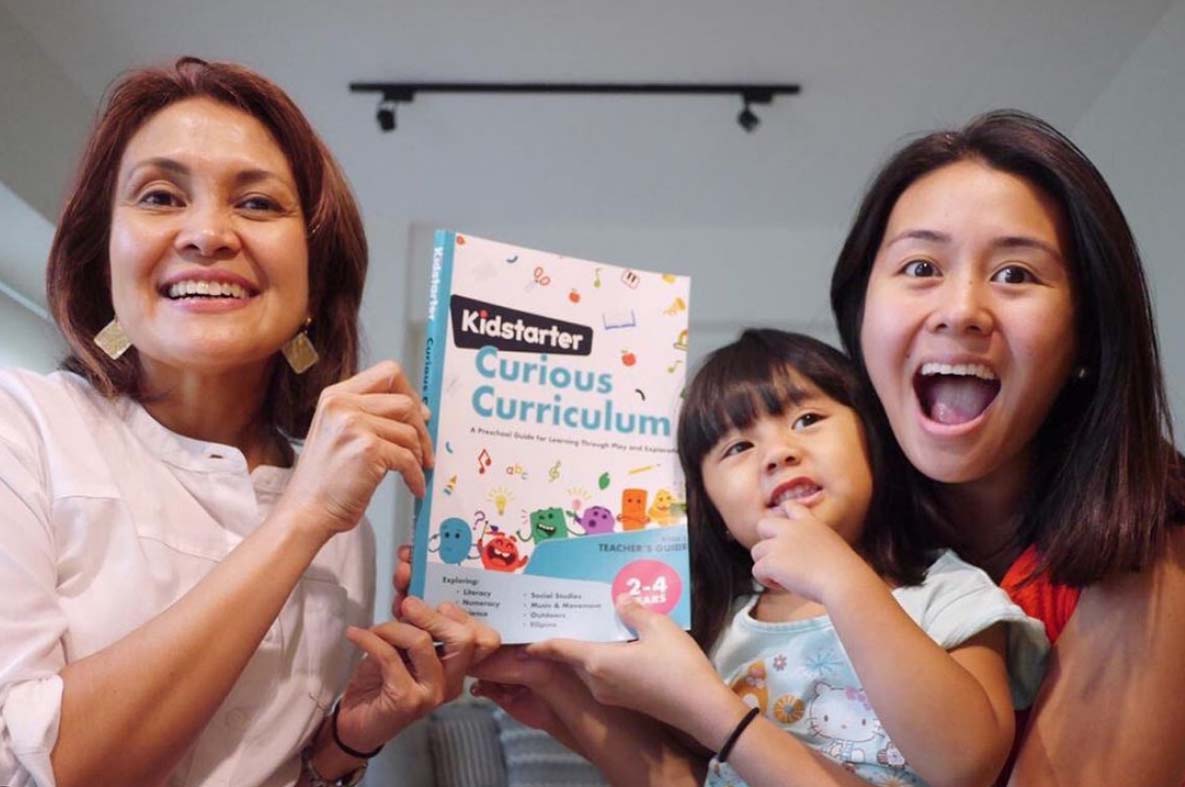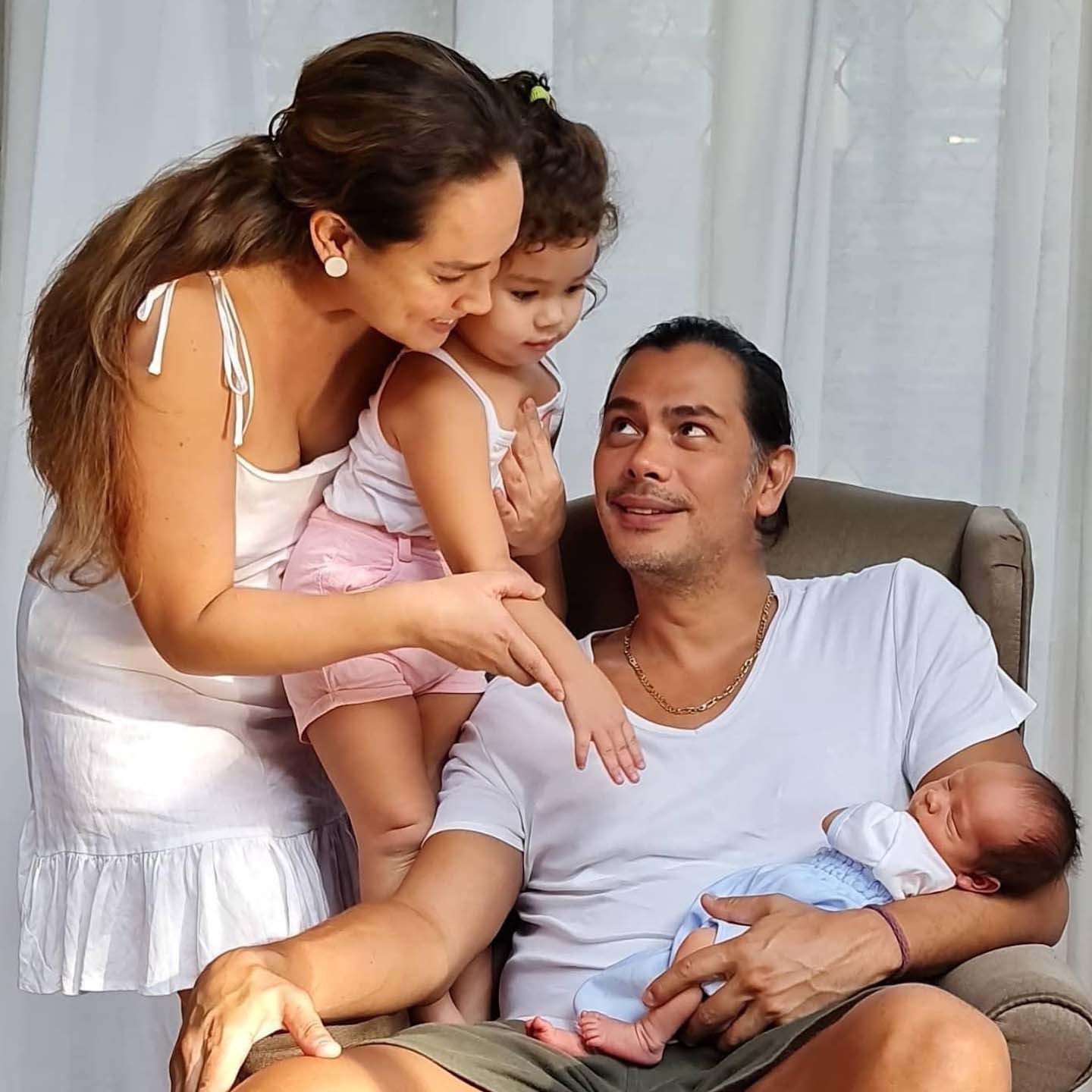Tags: child development Dr. Donna Pangilinan-Simpao Edge Davao Home-Based Learning Homeschool Homeschooling in the Philippines Kidstarter Kidstarter Curious Curriculum Liana Lim-Cruz Meg Hernandez Meghann Hernandez Metro Mom Parent-Teacher parenting Play-Based Learning
Kidstarter authors, Dr. Donna Pangilinan-Simpao and Liana Lim-Cruz, break down the basics of educating toddlers at home.
Homeschooling is a form of education wherein parents teach their children at home instead of sending them to a traditional school. There are various reasons why some families choose to take this route. Subsequently, during the pandemic, interest in homeschooling has increased exponentially. Several parents found the setup more beneficial and attuned to their lifestyle and principles, while others considered it for reasons brought about by the current global situation.
Getting into home-based learning may seem overwhelming at first, more so for those handling toddlers. I can completely relate to this, as I also had a couple of apprehensions in the beginning and feared the worst that could happen under my tutelage—add to that my busy schedule and limited resources. Later on, I realized homeschooling is doable as long as your heart and mind are set on it and you don’t compare or compete with others.
Once you’ve gone past all deliberations and have decided on pursuing the reality of homeschool for your child—whether for the long-run or just a meantime solution while waiting for physical classes to resume safely—it would be best to get some guidance on how to move forward, what to consider and expect, and how to make it happen.
Homeschool advisors
To help kick-start your journey, I summed up few of the frequently asked questions and sought the advice of experienced homeschool moms, Dr. Donna Pangilinan-Simpao, M.D. and Liana Lim-Cruz, M.S. ED.
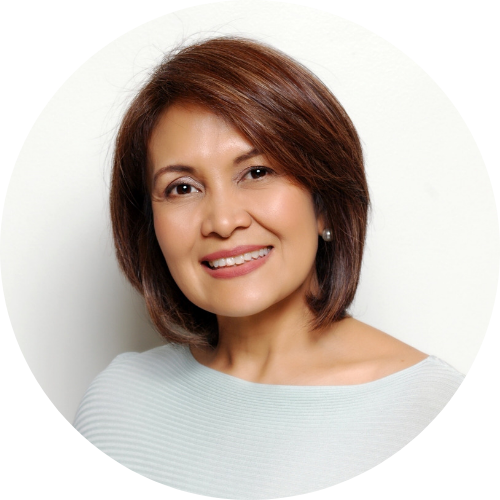
Dr. Donna Pangilinan-Simpao 
Liana Lim-Cruz
Dr. Donna Simpao is the founder of Homeschoolers of the Philippines group on Facebook, which now has 37,000 members. This former president of Homeschool Association of the Philippine Islands (HAPI) has homeschooled her four children from birth to age 13—a wealth of experience spanning a total of 17 years. She is also a licensed physician focusing on primary care and general practice.
Liana Cruz is a homeschooling mom and a former teacher in schools in New York City, USA and the Philippines. After a few years of teaching in Explorations Preschool, she took up her master’s degree in Early Childhood Education at Bank Street College in New York. She has been homeschooling her daughters, Nadia and Elia, since birth. Furthermore, she has intentionally done play-based activities since her eldest was just 13 months old.
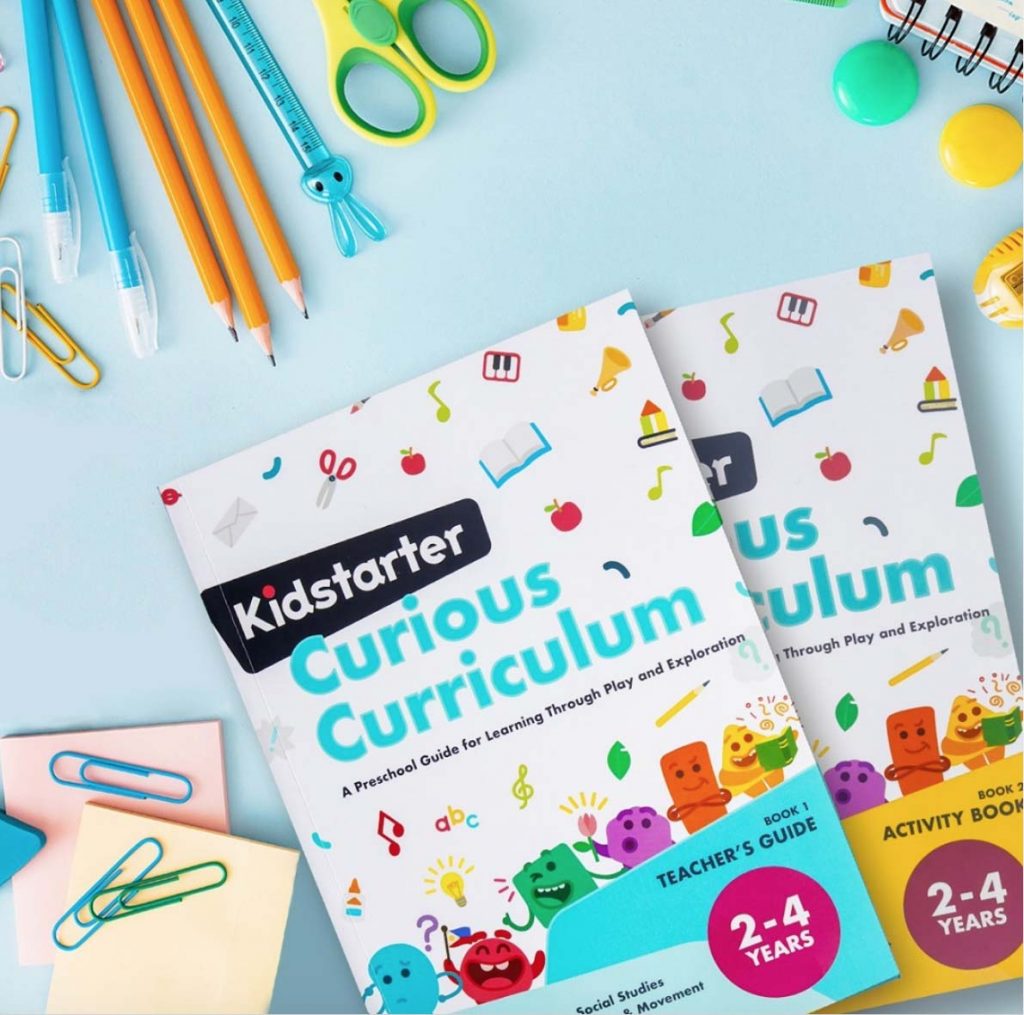
Photo: @kidstarter on Instagram
Together, Dr. Donna and Teacher Liana created Kidstarter, a company that aims to make a difference in the preschool home education scene. Their mission is to provide relevant, educational, intentional and affordable preschool resources for Filipino homeschool communities, as well as offer supplementary material to those already attending preschool or daycare centers. One of their first steps into achieving this goal is creating Kidstarter Curious Curriculum (KCC), a preschool program specially designed for the Filipino child.
Ideal age
The early years, from birth until second grade, is a crucial and wonderful time to homeschool your child.
“We believe homeschooling and parenting are intricately intertwined. Our understanding is ‘homeschooling’ begins in the womb,” says Teacher Liana. “Volumes of research on growth and development show the importance of prenatal conditions, infancy, and the child’s first years. But, as for homeschooling being an intentional decision to set a regular schedule to home educate a child, we’d say age 2 to 2 ½ is a good time to start.”
During this stage, children are wired to learn and they become more observant of their environment and the things around them.
“Homeschooling for this age group would simply be letting the child lead and supporting them in the best way they learn—through play and exploration. You may also immerse them into the wonderful world of books through reading, as well as play games and go on nature walks or trips.”

Photo: @kidstarter on Instagram
Learning through play
According to Dr. Donna and Teacher Liana, parents are encouraged to fan the flames of curiosity and creativity through play sessions that are usually led by the child. Not only will it help them unlock various skills, it also instills the love for learning.
“The best way your child learns, in the early years, is through play. That is something you can do—or learn to do as you go along. All you need are open-ended materials, a curious mind, and uninterrupted time. It’s an advantage because you are taking part in the critical play years of your child and learning the way they see the world through it.”
“When you play and invest time, you are filling up your kid’s invisible bucket. It makes them feel loved, cherished and taken as priority. Intentional homeschooling allows you to get to know your child better—the things they like, dislike, what irritates and frustrates them, what encourages them or builds them up.”
Observational learning or modeling is crucial during early childhood. “Parents should, first and foremost, set the example for character traits or values they want their children to imbibe or learn—such as kindness, honesty, helpfulness, and obedience. It helps to read them books that focus on character.” “When the child is ready, you may introduce skills they can use in their day to day activities: Numeracy as they count toys or books, fine motor skills through pre-writing and pre-reading activities, and listening skills through storytelling sessions.”
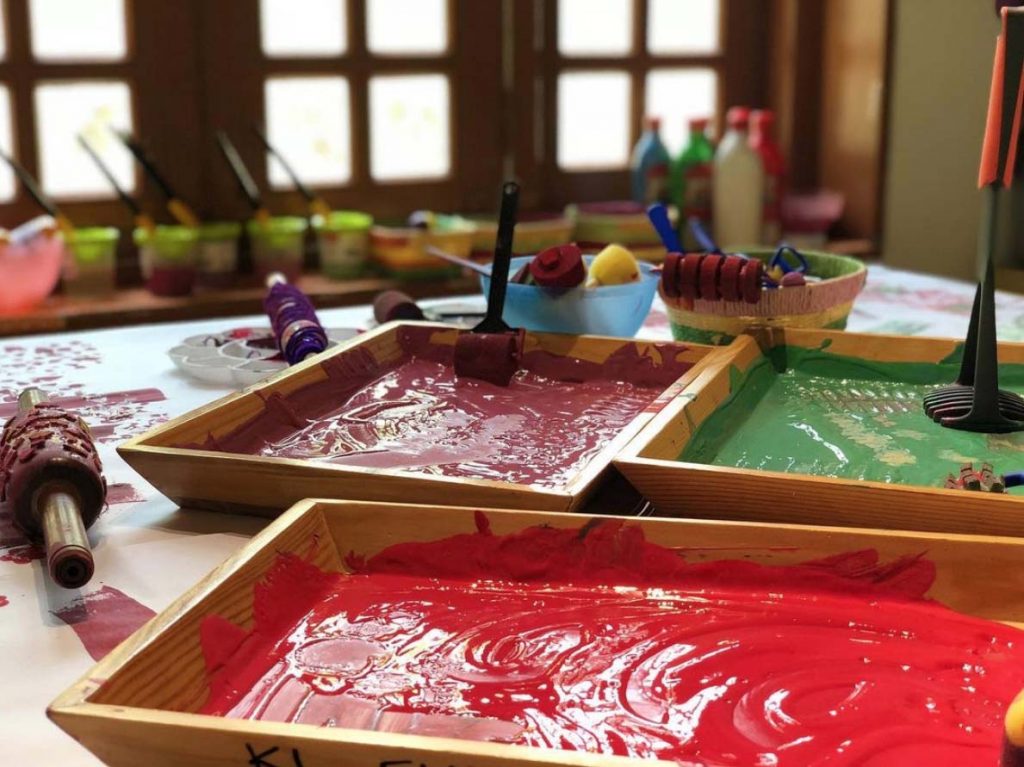
Photo: @kidstarter on Instagram
Space and time
It is highly recommended to identify and create a conducive space for homeschooling. This helps set the tone and cultivates the kid’s creativity, sharpens their focus, and motivates them to learn.
For easy reference, the Kidstarter authors gives us a rundown of the commonly used materials for homeschooling.
- Paper (all colors, shapes, textures)
- Writing and drawing materials such as markers, pencils, crayons, pens, chalk, paints, cray-pas, etc.
- Scissors, tape and glue
- Old and new boxes
- Available items at home which can be used for various activities – buttons, bottle caps, marbles, popsicle sticks, tissue paper rolls, sensory materials (rice, pasta, flour, water, cornstarch, sand, etc.), containers or bins of different shapes and sizes
- Books
Schedule a time for your lessons and avoid any form of distraction. The duration of the learning session depends on the child’s age and the availability of the parents or guardian.
“For tots 2 to 4 years old, 30 minutes to 1 hour of intentional homeschooling would be more than enough. Focus on play, use developmentally appropriate strategies, and be a fun and funny parent!”

Photo: @kidstarter on Instagram
Attitude and mindset
Dr. Donna and Teacher Liana fill us in on the realities of being a parent-teacher and on how to make homeschooling work for your family.
“Think of your child and listen. Children learn best when they are doing things they enjoy. Pay close attention to what they say and do, as well as to things they do not say or avoid doing. This might help you read between the lines.”
“Be kind to yourself and your child. There will good days and tough days as a parent-teacher. We truly believe in the interaction of cognition or learning with emotions or feelings. Your disposition can affect your child’s emotions—and that can either encourage them to learn or discourage them from becoming curious. If you’re having a tough day, take a deep breath (or more, if it’s a really rough one), smile, and move forward.”
“Make sure to celebrate those victories, no matter how small. Being a parent-teacher is hard work. A sustained 20-minute session, a meaningful read-aloud, or even a repeated painting activity is still worth celebrating!”
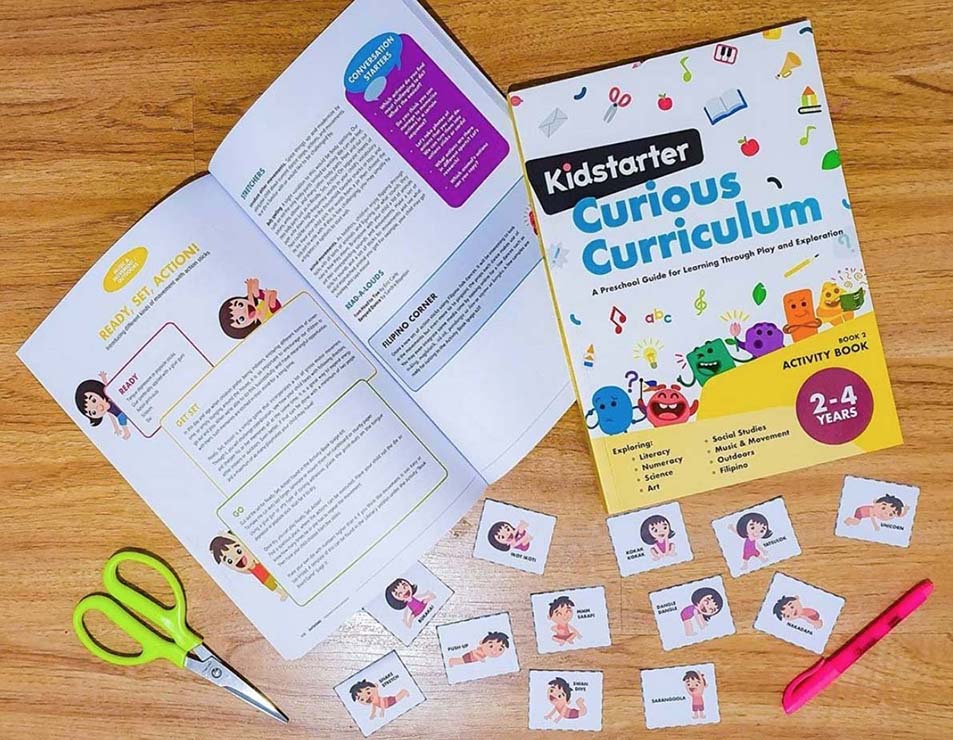
Photo: @kidstarter on Instagram
Play-based curriculum
If you’re still looking for educational activities you can do at home, you might be interested to get a copy of the Kidstarter Curious Curriculum. It provides you with a number of activities you can do in a 10-month period.
It is designed to help parents initiate meaningful engagements through play and exploration with children 2 to 4 years old. The curriculum is a two-book set that includes a Teacher’s Guide and Activity Book for the curious child and parent.
The Teacher’s Guide begins with well-researched, foundational, and tried-and-tested guidelines on becoming your child’s first teacher at home. Its second half consists of well-designed activities that support play learning through the following disciplines: Literacy, Numeracy, Science, Art, Music and Movement/Outdoors, and Social Studies.
The Activity Book comprises of colorful pages designed for play-based, creative hands-on and minds-on sessions. The book also comes complete with an introduction to Filipino language and culture.
To order, log on to www.kidstarter.ph or go to their official store on Lazada. Follow @kidstarter on Instagram for more information and updates.
This story is also published on my Metro Mom column in Edge Davao newspaper. Photos courtesy of Dr. Donna Pangilinan-Simpao and Liana Lim-Cruz.

